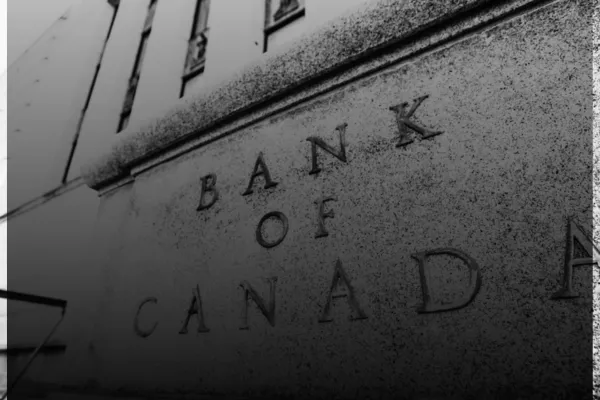Mortgage Blogs
Stay up to date with the recent industry news and mortgage trends.

Toronto Mortgage Broker Insights: How Bond Yields & BoC Policy Will Impact Mortgage Rates Through 2026
As an experienced Toronto mortgage broker, one of the most valuable conversations I have with clients is explaining why mortgage rates move, what drives them, and what you can expect in the near future. In this article, I’ll break down how bond yields and Bank of Canada (BoC) policy rates influence mortgage rates and provide an outlook through 2026.
The Mechanics Behind Mortgage Rates in Toronto
Government Bond Yields and Fixed Mortgage Rates
The yield on government bonds—especially the 5-year Government of Canada bond—is the primary benchmark for fixed-rate mortgages. Lenders start with these yields as their baseline cost of funds, then add spreads to cover risks and profit margins.
When bond yields rise, fixed mortgage rates typically increase.
When bond yields fall, fixed mortgage rates often decline, although lenders may adjust spreads depending on market volatility.

Bank of Canada Policy Rate and Variable Mortgages
The BoC’s overnight policy rate influences banks’ lending costs and drives the prime rate, which directly impacts:
Variable-rate mortgages
Home equity lines of credit (HELOCs)
Adjustable mortgages
When the BoC cuts rates, borrowers with variable-rate mortgages in Toronto often see faster relief compared to those with fixed mortgages.
Why Mortgage Rates Are Always Higher Than Bond Yields
Fixed mortgage rates exceed bond yields because of added risks, such as:
Default risk
Administrative costs
Pre-payment risk
Liquidity challenges
This difference, known as the spread, widens during volatile times and directly affects the offers you receive from your mortgage broker.
Toronto Mortgage Market Update (Late 2025)
Currently:
The Bank of Canada policy rate sits at 2.75% after multiple cuts since mid-2024.
The 5-year Government of Canada bond yield averages around 2.87%.
What This Means for Borrowers
Variable-rate mortgages benefit quickly from BoC cuts.
Fixed mortgage rates reflect bond yield changes but adjust with a lag.
As a Toronto mortgage broker, I help clients evaluate whether fixed or variable products suit their financial goals, especially in uncertain markets.

Forecast for Mortgage Rates Through 2026
Early 2026 (Q1–Q2)
BoC may cut another 25 basis points if inflation cools.
Bond yields may drift lower, landing around 2.5%-2.8%.
5-year fixed mortgage rates may fall to 4.0%-4.5%.
Variable mortgages will likely see quicker relief.
Mid to Late 2026 (Q3–Q4)
BoC may hold steady or cut further if inflation remains under control.
Fixed rates could settle around 3.8%-4.2% for well-qualified borrowers.
Variable rates may offer the lowest-cost options but carry higher uncertainty.
Risks and Unknowns That Could Shift Mortgage Rates
Inflation shocks → Could push bond yields higher.
Global interest rate trends → U.S. Federal Reserve and ECB policies affect Canadian markets.
Government debt issuance → Increased supply of bonds can raise yields.
Mortgage renewals → A wave of renewals at higher rates may slow consumer spending.

Mortgage Planning Tips from a Toronto Mortgage Broker
Fixed-rate borrowers: Consider locking in now if you want payment stability.
Variable-rate borrowers: You may benefit if BoC cuts continue, but watch inflation.
Renewals: Start shopping early to secure the best terms.
Compare lenders: Non-bank lenders sometimes offer competitive rates with different trade-offs.
Stay informed: Monitor bond yields and BoC announcements to anticipate market shifts.
Bottom Line Prediction Through 2026
For a typical well-qualified borrower in Toronto by year-end 2026:
Fixed 5-year rates: Likely in the 3.8%-4.5% range depending on spreads.
Variable rates: Expected to remain lower than fixed, but more volatile.
Working with a Toronto mortgage broker ensures you stay ahead of market changes, lock in favourable terms, and make confident mortgage decisions.
Need Expert Mortgage Advice in Toronto?
Navigating today’s higher-rate environment requires planning and the right guidance. Whether you’re renewing, refinancing, or buying your first home, I can help you find a tailored solution.
📞 Call me today at 647 694-7033
📧 Email: [email protected]
FAQs: Toronto Mortgage Broker & Mortgage Rate Outlook
Q1: Why do Toronto mortgage rates follow bond yields?
Bond yields represent lenders’ cost of funds. When yields rise, fixed rates must adjust upward to remain profitable.
Q2: How quickly do BoC rate changes affect my mortgage?
Variable-rate mortgages adjust almost immediately with changes to prime, while fixed rates move more gradually.
Q3: Is now a good time to lock in a fixed mortgage in Toronto?
If you value stability and believe bond yields are near their peak, locking in may be wise. A broker can compare scenarios for you.
Q4: What risks could push mortgage rates higher in 2026?
Persistent inflation, global interest rate hikes, or government debt supply could all drive up rates.
Q5: How can a Toronto mortgage broker help me save money?
A broker compares lenders, negotiates spreads, and tailors products to your financial goals—often securing better rates than major banks.
Q6: Should I choose a bank or a non-bank lender in Toronto?
Banks offer stability and full-service products, while non-bank lenders may provide lower rates but fewer features. Your broker helps weigh trade-offs.
Trusted Guidance, Proven Success

Alan Borcic | Mortgage Agent
(647) 694-7033
Assistance Hours
Mon – Fri 9:00am – 8:00pm
Saturday/Sunday – CLOSED
Get In Touch With
(647) 694-7033
Assistance Hours
Mon – Fri 9:00am – 8:00pm
Saturday/Sunday – CLOSED
Contact Us

© 2025 Mortgage With Alan - All Rights Reserved.
Alan Borcic, Mortgage Agent M24001034
BRX 13463
